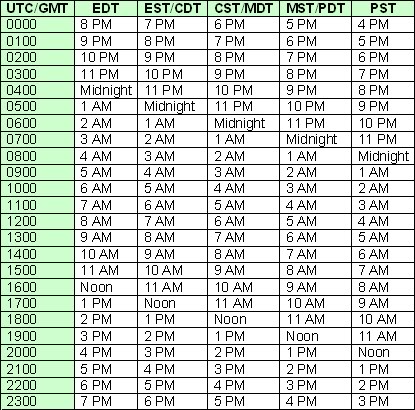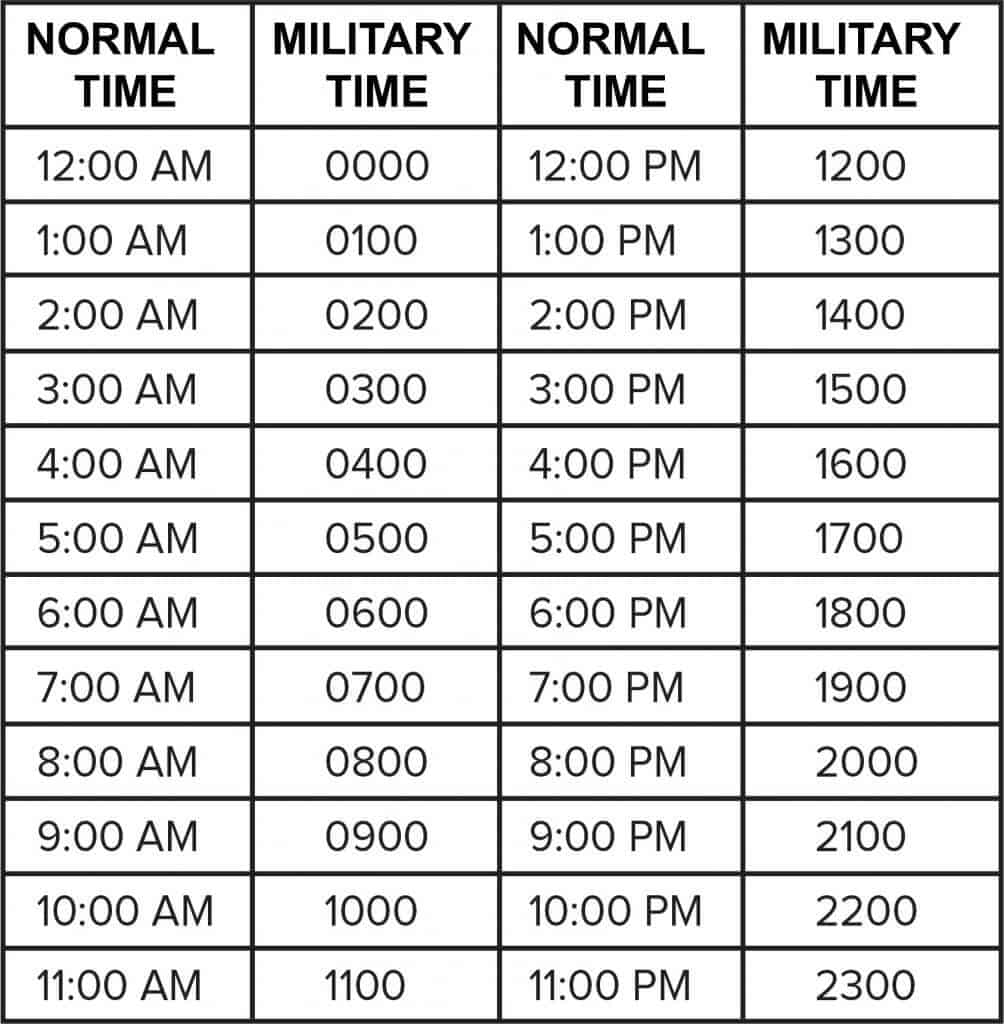

The following tables show z-times for each time zone in the United States and U.S. For example, 00Z in the Central STANDARD Time is at 6:00 p.m. Z-time does not change with the change for daylight saving time but the local time will change. 00Z for the United States begins in the evening local time.

The 24-hour clock (Z-time) begins at midnight (00Z) at this prime meridian. Moving east across the International Date Line means subtracting 24 hours from the clock thereby reversing one day on the calendar. This means you advance the clock 24 hours in essence you advance one day on the calendar. Moving west across the International Date Line one moves from the -12 UTC time zone to the +12 UTC time zone. At the meeting of the -12 and +12 time zones is the International Date Line. Time zone offsets are identified as -12 UTC through 0 to +12 UTC with the minus values signifying time "before" or ahead of prime meridian (which is the Western Hemisphere). and done PST stands for Pacific Standard Time. Simply mouse over the colored hour-tiles and glance at the hours selected by the column. UTC Converter UTC Universal Time Coordinated GMT +0 Fri, Mar 24 12am 3am 6am 9am 12pm 3pm 6pm 9pm Universal Time Coordinated Offset: UTC is 0 hours ahead Greenwich Mean Time (GMT) and is used in Universal Coordinated Universal Time (UTC) is the world time standard that regulates clocks and time. However, today the individual zone boundaries are no longer straight, nor are they always continuous, as they have been modified for convenience and to satisfy the desires of sovereign nations. This time zone converter lets you visually and very quickly convert PST to UTC and vice-versa. With the 360° daily rotation of the earth, the sun is moving 15° each hour which leads to the formation of 24 time zones. Today, one can visit the Royal Observatory and straddle this 0° meridian with one foot in each hemisphere. This time span will be between 7:00 am and 11:00 pm PST time. This 0° meridian divides the Eastern from the Western Hemisphere. This was for both for longitude and timekeeping. settled the matter where it was agreed to establish a single "prime" meridian (0° longitude), passing through Greenwich. Once the value of AT is known, the data on these pages may be expressed in Universal Time as follows : Convert all arguments in provisional Universal Time. In SQL Server 2008, there is a new datatype called DateTimeOffset which stores the offset together with the date, so that dates can be converted accurately.In 1884, a conference in Washington, D.C. Offset: Z is 0 hours ahead Greenwich Mean Time (GMT) and is used in Military Greenwich Mean Time (GMT) originally referred to the mean solar time at the Royal Observatory in Greenwich, London. Unfortunately, even this will not be accuarate for historic data, as countries change the daylight savings dates each year.
#CONVERT UNIVERSAL TIME TO PACIFIC TIME CODE#
You can download the applicable functions and data from The Code Project If you do not need exact times in your data, and if you are only ever converting from Pacific to UTC and not other time zones, then you can use the method John suggested.įor better accuracy, you can create a table in your database which stores the time zones and when each country switches to daylight savings. Depending on how far back you go, the dates and rules for determining the dates Daylight Saving Time started and ended have changed many times over the years.Īnyone know of a function I can use to convert the UTC date/time field to Pacific Time? I know I can use dateadd to subtract the 8 hours, but I would like to know if there is a better way. A web search should turn up the basic data for you. For an application that looks at historic times and needs to convert any from UTC to Pacific Time, I'd think you'll need a table of the start and end dates for Daylight Saving Time to know whether it's -7 hours or -8 hours.

Of course, the current difference (-7) may not be valid if you're looking at a date from February, for instance. ,DateAdd(hh,DATEDIFF(hh, GetUtcDate(), GetDate()), as MyDatePacific If your server is set to the Pacific time you want (standard or daylight), you may use the DateDiff between getDate() and getUTCDate() as your offset, using DateAdd to apply it to your UTC time. But of course you also will probably want to account for whether daylight saving time is in effect, making the difference -7 hours rather than -8. Knowing your time zone (Pacific) is a good start. Time zone difference: London Time (GMT/BST) to Pacific Time (PDT/PST).


 0 kommentar(er)
0 kommentar(er)
